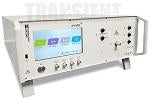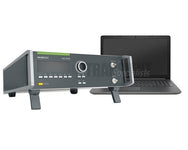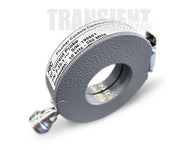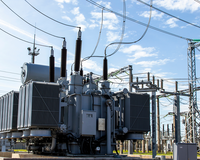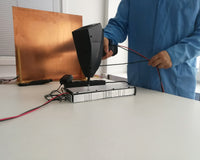
Most of us have experienced a power outage. Maybe a bad storm knocked out all the power in your neighborhood. Or perhaps your power went out due to a utility company’s system failure. Whatever the cause, we’re all familiar with electrical blackouts, but what is a brownout?
A power brownout is similar to a blackout, but it refers to a partial loss of power, rather than a complete loss of power. When a blackout occurs, all appliances and electronics in your home will stop working; in contrast, a brownout reduces voltage by 10% to 25%. A blackout is also unintentional, where a brownout is done on purpose by a utility company.

Use these links to quickly navigate to your desired section, or read our post in full for a complete explanation of the difference between an electrical blackout and brownout.
- What's the difference between a blackout and a brownout?
- What should I do in the event of an electrical brownout or blackout?
- What devices are vulnerable to power failures?
- How do I protect my appliances from brownouts?
- Final Notes
What’s the difference between a blackout and a brownout?
The terms “brownout” and “blackout” should not be used interchangeably, as they mean different things. A blackout refers to a total loss of power that can last anywhere from a few minutes to even a few days.
A brownout, on the other hand, refers to a partial outage where voltage is typically reduced by 10-25%. Since a brownout is done intentionally by a utility company, they know exactly when it will stop and it won’t last for very long.
Blackouts are unintentional and are due to outside forces, like weather, while brownouts are usually intentionally done by utility companies to prevent blackouts from occurring in the future. Neither situation is particularly enjoyable, but at least with a brownout, you know it’s intentional.
What is a brownout?
A brownout is a partial voltage outage that is implemented intentionally by a utility company. Rather than shutting off the power entirely, a brownout reduces voltage by at least 10-25%. Brownouts also usually last for only a short period of time and the utility company has complete control over when it starts and stops.

Brownouts are typically planned in advance by a utility company to prevent a blackout from happening in the future. When a utility company can predict that there will be an increase in demand that overloads the power grid, they will intentionally reduce the use of electricity by making it unavailable.
Some of the tell-tale signs of a brownout include flickering lights, electrical appliances repeatedly turning on and off, and internet connection going in and out.
Another major difference between a blackout vs. brownout is that you can still use your appliances and electronics during a brownout. Heating and electricity systems will often still work during a power brownout since the voltage reduction is so minimal.
However, more sensitive electronic equipment should not be used because the brownout will make your voltage fluctuate, which can potentially damage them, especially if the device needs a specific voltage to function. So even though you can still technically use your appliances and electronics during a blackout, you’re better off just unplugging them and waiting for the voltage to return to its full capacity.
In the case of a brownout, you’ll want to check in with your utility company so you can see if the issue is coming from your grid and ask when the power will be fully restored. If the brownout was not produced by the utility company and is isolated to your home, then you should call an electrician for an emergency service. However, in most cases, your utility company will alert you if they’re going to be doing a brownout so you can properly prepare.

What is a blackout?
A blackout is a total loss of power. Where a brownout is intentional, a blackout is completely unexpected. Various circumstances can cause a blackout, such as:
- Damaged electrical lines
- Lightning striking electrical poles
- Ice on power lines
- Fallen tree branches on power lines
- A spike in power demand that pushes the grid past its limit
- An earthquake that damaged power lines
- A vehicle that collided with a utility pole
- Severe weather
Another major difference between a blackout and a brownout is that a blackout can last for an indefinite amount of time. With a power brownout, the responsible utility company determines exactly when the power will return, but when an unplanned blackout occurs, it can take hours or even days to regain power.
Because a blackout is a complete loss of power, all appliances and electronics will stop working. Your electricity and heating won’t work, as well as any electronic equipment that’s usually plugged in.
However, it is possible to experience a rolling blackout, which is an intentional blackout done by a utility company. Rolling blackouts will typically occur with some type of warning and will last for a predetermined length of time. These will usually only happen when there are peak power demands that can’t be met by the current electricity supply, or in the event of high fire risks.
Since a blackout is unintentional and can be caused by a host of different situations, there’s no way to know exactly when the power will come back. If you experience a blackout, you should check in with your utility company and see if they can do anything about restoring the power.

What should I do in the event of an electrical brownout or blackout?
If you experience a brownout or blackout, don’t panic. When power unexpectedly goes out, ensure that electronics are safely unplugged, then call your local utility company to confirm whether or not the issue is coming from your electrical system grid. If your utility company can confirm all is functioning as it should, there may be isolated electrical issues within your home. In this instance, call an electrician for aid; do not investigate the outage yourself, as this can pose a safety risk.
If your utility company can confirm it’s a grid issue, observe the following:

1. Unplug all of your devices
Although you may be able to use some of your electronic devices during a brownout, you should still unplug them. A brownout causes a decrease in voltage power, which can damage the devices if you still try to use them. Unplugging your devices also prevents them from getting damaged by a power surge once the electricity is restored. When power levels shift significantly in a short amount of time, many devices are unable to handle this shift, and may be irrevocably damaged. This is particularly true for devices that cannot adequately regulate the amount of power received, such as a desktop computer; if power depletes than surges within a short span, the desktop may malfunction and be rendered useless.
Note: it’s wise to keep one small lamp plugged in, so you are aware when power is restored.
2. Sign up for alerts
As soon as your power goes out, sign up for alerts through local emergency alert systems. In the case of a storm or emergency situation, try to get updates from a battery-powered radio.

3. Keep a fully charged phone on hand
As tempting as it may be to go on your phone during a power outage, avoid spending unnecessary time on your mobile device. It’s crucial to have a fully charged phone on-hand during a power outage in case of an emergency, and because you don’t have power, you can’t charge your phone if it dies. Try to conserve your phone’s battery by using as little as possible, or charge it in your car if possible.
4. Reduce your power consumption
As a brownout typically follows the overconsumption of power, your best bet during this type of electricity loss is to reduce your consumption as much as possible. This will extend the lifetime of your electronic devices as you won’t be able to plug them in and charge them.
5. Use flashlights, not candles
If you experience a full blackout that knocks out all of the electricity in your house, you won’t be able to see anything. In this case, you’ll want to use flashlights to see, not candles. Candles are a fire hazard that should absolutely be avoided during a blackout if possible.

6. Use a generator
If you have a generator on hand, put it to use. A generator is a backup source of power that will be very helpful during a blackout or brownout, helping you utilize essential devices.
7. Avoid opening your refrigerator
In the event of a blackout, your refrigerator will stop working, which means all the food inside will start to slowly spoil. To slow down the rate at which this happens, it’s important to avoid opening your refrigerator as much as possible so the food inside can stay cold. Eat fresh, perishable foods first and leave non-perishables as a last resort.
8. Keep away from power lines
Keep away from any power lines near your home that have fallen due to a storm or severe weather. If power lines near you have fallen, call 911 and let them handle it.
9. Don’t run a generator inside your home
A home generator is a great way to keep your electricity working during a power outage, but you never want to run one inside your home or connect it to your home’s electrical system. This can produce carbon monoxide, which can be deadly.
What devices are vulnerable to power failures?
There are various devices that are vulnerable to power failures, whether it be a blackout or a brownout.
Some of the electrical devices that can get damaged from a power failure are:
- Tvs
- Computers
- Refrigerators
- Landline phones
- Microwaves
- Ovens
- Clocks
- Lamps
- Hair dryers
- Washer/Dryer
- Toaster
- Coffee machine
Basically, any device that is connected to an outlet or powerstrip is vulnerable to a power failure. However, devices with electric motors or electric components are most vulnerable to brownouts. Electric motors and components are more susceptible to a low voltage because it can cause them to draw more current and overheat. When an electric motor or component is exposed to a lower voltage than it’s used to, it’s more likely to get damaged.
In the event of either a blackout or a brownout, unplug these devices to prevent them from getting damaged from a power surge, which can occur when the electricity eventually comes back on.

How do I protect my appliances from brownouts?
In the case of a brownout, there are a couple of things you should do to protect your appliances and prevent them from getting damaged.
First things first: You need to unplug all your devices. Although certain devices may still work during a brownout, you’re better off being safe than sorry and unplugging all your devices. Unplugging your devices will prevent them from experiencing an inconsistent flow of electrical currents, which can damage the devices. You should also try to reduce your power consumption as much as possible during your time, since the brownout is due to a spike of power usage.
You can also use an undervoltage relay, which will automatically disconnect your devices when the voltage drops to a certain amount. However, these can be expensive, so they’re only recommended for very sensitive appliances, like LCD TVs and computers.
Another option is to apply a UPS, or uninterruptible power supply. A UPS has a voltage regulation capacity, which will ensure a stable voltage output even when the voltage supply fluctuates. This can be very helpful in the event of a brownout because it can ensure a stable power supply for important devices.
You can also use a powerstrip, or a surge protector, which will prevent your devices from getting ruined from low voltage. A surge protector will protect anything that’s plugged into it during a blackout, so it’s a good idea to reserve it for your expensive or most used devices.
The last preventive measure you can take to protect your appliances from brownouts is to get an annual electrical walkthrough. An annual electrical walkthrough will ensure that there is proper wiring and updated electrical systems in place that will prevent surges from occurring. Having an electrical walkthrough done is a good way to make sure your family and home will be kept safe in the event of a brownout.

Final Notes
There’s no denying that dealing with a loss of power is terrifying. It doesn’t matter if it’s a complete loss of power or just partial, it’s still a scary situation. One second everything’s fine and all your appliances are functioning perfectly, and the next second you’re sitting in a completely dark room.
But if you find yourself in the event of either a blackout or a brownout, the most important thing to do is not panic. As scary as it may be, it’s important to remain calm so you can follow the proper steps to remain safe. Unplug your devices, reduce your power consumption, use flashlights, and keep away from power lines. As long as you follow these simple steps, you should be safe during a brownout or blackout.
Both situations can be scary to experience, but it’s important to be aware of the differences between a brownout and blackout and take the appropriate actions when either occurs.
Armed with the right information, you can prevent damage to your appliances and weather your electricity outage until power is restored.


 Contact Us
Contact Us



